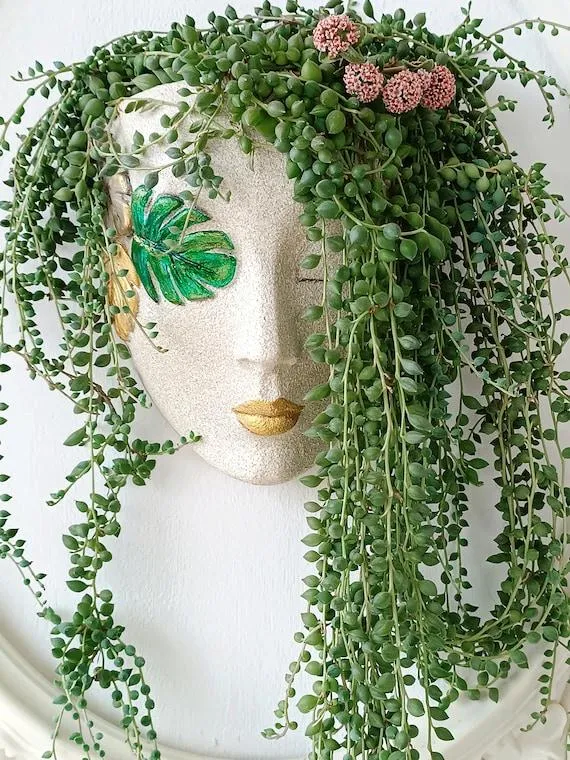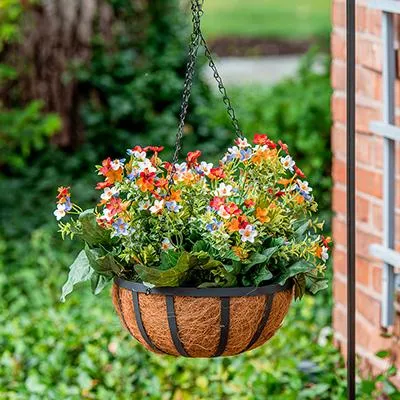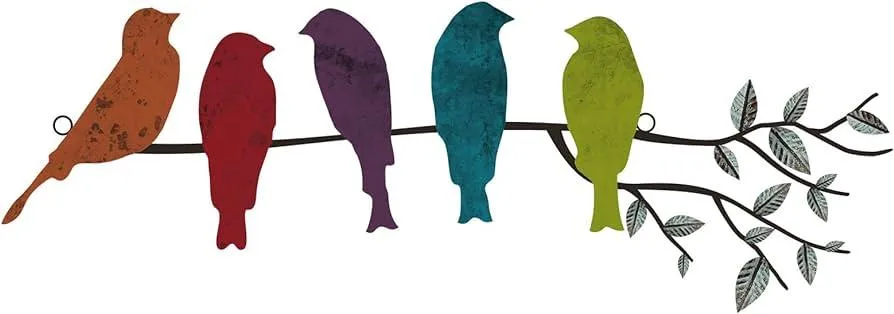Everything You Need to Know About Hanging Trailing Plants
If you’re looking to add some lush greenery to your outdoor space but don’t have much room for planters on the ground, hanging trailing plants are the perfect solution. They come in a variety of styles and can transform balconies, patios, or any area with limited floor space into a relaxing oasis. But with so many options available, it’s easy to get overwhelmed when choosing which trailing plants to hang. In this article, I’ll cover all the basics to help you select and care for hanging vines that will thrive for seasons to come.
Choosing the Right Trailing Plants
The first step is finding plants suited to your climate and care requirements. Here are some top trailing plant varieties to consider:
-
Ivy: English ivy is resilient and will trail anywhere from 2-10 feet long. It thrives in sun or shade but may need pruning to control its growth. Silver lace vine has delicate greyish-green leaves and prefers partial shade.
-
Petunias: These annual bloomers come in many colors and throw out cascades of flowers all summer. They love full sun and will spread about 3 feet long before needing to be trimmed back.

-
Nasturtiums: Their large, round leaves and colorful blooms make nasturtiums a showy hanging basket option. They climb up to 4 feet and attract pollinators to any sunny spot.
-
Creeping fig: With its small oval leaves, creeping fig forms a dense matt that drapes down gracefully. It handles partial shade and high temperatures well but may need support to keep it properly trimmed.
-
Vinca vines: Popular vinca varieties like periwinkle produce lush green foliage and colorful flowers throughout the year in full sun or partial shade. They trail about 1-2 feet long.
Consider how far you want your plants to trail as well as their sun and water requirements before choosing. Mixing textures, leaf shapes, vines of various lengths, and blooming/foliage plants provides visual interest.

Setting Up the Hanging Planters
Once you’ve selected your trailing plants, it’s time to outfit them with the proper containers. From my experience, self-watering planters that hold moisture and fertilizer are particularly convenient for busy schedules. Look for baskets, hanging pots, or wall planters designed to drain well with multiple holes on the bottom.
When filling the planters, use a soil specifically formulated forpotted plants that drains efficiently. Add a layer of gravel or Styrofoam at the bottom for aeration if desired. You’ll likely want to germinate seeds or seedlings indoors first before transplanting outside once night temperatures are reliably above 50 degrees Fahrenheit.
As for hanging hardware, sturdy chains, cables, or hooks securely attached to load-bearing points on your ceiling, patio cover, or deck railing work best. Make sure the planters aren’t too heavy for their means of support. Distance them at least 3 feet apart and 18 inches from any overhead obstructions to allow plenty of room for growth.
Caring for Hanging Trailing Plants
Proper care keeps your hanging vines looking their best throughout the seasons. The key is monitoring moisture levels—trailing plants tend to dry out quickly, so check soil daily in summer and water whenever the top inch feels dry.

Fertilize hanging baskets monthly from spring to fall with a water-soluble product designed for flowers and vegetables. This provides crucial nutrients as the plants pump out new growth and blooms. Pruning is also important to encourage a full, bushy habit. Simply trim off leggy stems or faded flowers regularly to maintain an attractive shape.
Some trailing plants like petunias and nasturtiums may need seasonal dividing and repotting as their roots become congested. In fall, bring containers indoors before Frost or swap out warm-weather annuals for hardy ivy or wintercreepers. With a bit of TLC, your hanging vines will reward you with beauty for many growing seasons to come!
Getting the Most from Your Hanging Gardens
To really jazz up outdoor spaces with curtains of greenery, try hanging baskets in creative configurations. Group several together overhead or line a covered porch with rhythmical rows of trailing blooms in complementary hues. You can even wrap vines around arbors or cages to form living walls of foliage.
Place hanging planters where flowering or berry-producing varieties can provide bouquets or snacks for pollinators. Position petunias or fuchsias near seating areas so their sweet scent wafts over guests. And don’t hesitate to use trailing plants in unconventional spots like along fences or winding down tree branches to soften hardscaping.

With so many lovely options for incorporating draping annuals or perennials into landscape design, your imagination is the only limitation! With a bit of TLC, trailing plants can add lush greenery, colorful blooms, and a feeling of relaxation wherever space may be limited on the ground. So give them a try—I’m sure you’ll be pleased by how they transform your outdoor space.
I hope this article has helped answer your questions about selecting, planting, and caring for hanging trailing plants. Let me know if you need any clarification or have additional queries—I’d be happy to share more about all the beauty these versatile vines can bring to balconies and patios. With so many varieties to choose from, experimenting is half the fun and you’re sure to find trailing combinations you and pollinators will enjoy all season long.
Factors to Consider for Hanging Trailing Houseplants
| Plant Type | Light Needs | Watering | Soil |
|---|---|---|---|
| English Ivy | Medium to bright indirect light | Allow soil to dry out between waterings | Well-draining potting soil |
| Pothos | Low to medium indirect light | Water when top inch of soil is dry | Well-draining potting soil |
| Tradescantia | Medium to bright indirect light | Water when top inch of soil is dry | Well-draining potting soil |
| Philodendron | Medium indirect light | Water when top inch of soil is dry | Well-draining potting soil |
| Spider Plant | Bright indirect light | Water when top inch of soil is dry | Well-draining potting soil |
FAQ
- How do you hang trailing plants? There are a few different ways to hang trailing plants. You can use hooks, clips, strings, or cables connected to the ceiling or walls. Some hanging plants even come with their own hanging systems included.
- What types of trailing plants are good for hanging baskets? Some top choices for hanging baskets include English ivy, pothos, spider plants, wandering dude, petunias, begonias, and fuchsias. These plants have vines or stems that cascade over the sides of the container very attractively.
- Where is the best place in your home to hang plants? Pretty much anywhere you want a vertical garden! Above windows is a classic spot. You can also hang plants from ceilings, over cabinets, on walls, or from hanging systems above your kitchen table or desk. Plants dangling from height add such a lovely decorative touch.
- How far should hanging baskets be spaced apart? Generally, hanging baskets look best spaced 12-24 inches apart. This allows each plant to retain its own identity while allowing the vines to spill gracefully. However, spacing may depend on factors like the size of the baskets and heaviness of the foliage.
- What is the best way to water hanging plants? Hanging plants usually need watering every 7-10 days. You can remove the whole planter and water it in the sink. Another option is to use a watering can with a long spout. Or consider a self-watering system which wicks water up from a reservoir below.
- How do I keep hanging baskets looking good all season? Fertilize hanging plants every 2 weeks in the growing season using a diluted liquid houseplant fertilizer. Also remove any dead or diseased foliage. Trimming plants back occasionally will encourage new growth. Hanging plants require some TLC, yet can totally transform a space!
- What should I do if my hanging plants get leggy? Many trailing plants will become “leggy” – with long stems and few leaves -if they don’t receive enough sunlight. Cut the stems back quite a bit to encourage bushier new growth. Consider moving the plant to a spot with more natural light too. The pruning will hopefully energize the plant.
- Is it difficult to care for hanging baskets? With a bit of attentiveness, hanging baskets are basically low-maintenance. Water when the soil is dry, fertilize periodically, and prune as desired. The real work is in the weekly watering during hot weather. As long as you don’t forget that, trailing plants add easy style to any area.
